If you buy through our links, we may earn an affiliate commission. This supports our mission to get more people active and outside.Learn about Outside Online's affiliate link policy
Lift Your Spirits With This Staycation Yoga Sequence

You don’t need to purchase an airplane ticket or book a fancy trip to take a journey. In fact, you do not need to leave the confines of your home to have an escapade. You can simply unroll your yoga mat and let the practice take you where you are meant to go that day. Think of this practice by San Francisco-based yoga teacher Sarah Ezrin as an adventure, like when you arrive in a city you have never been to and wander, getting a little lost, until you find your way.
After all, our yoga mats serve many purposes. They can be a home base, a landing place to be present when you need to be somewhere familiar, or a map to help guide you when you feel lost. Your mat is even a place to get away. It can be a means of exploring new territories, where you learn things about yourself and the world.
Let us take a little trip. This eight-pose sequence can be done in a backyard for a little added fresh air and sunshine to make it feel like a true staycation.
Utkatasana (Chair Pose) variation
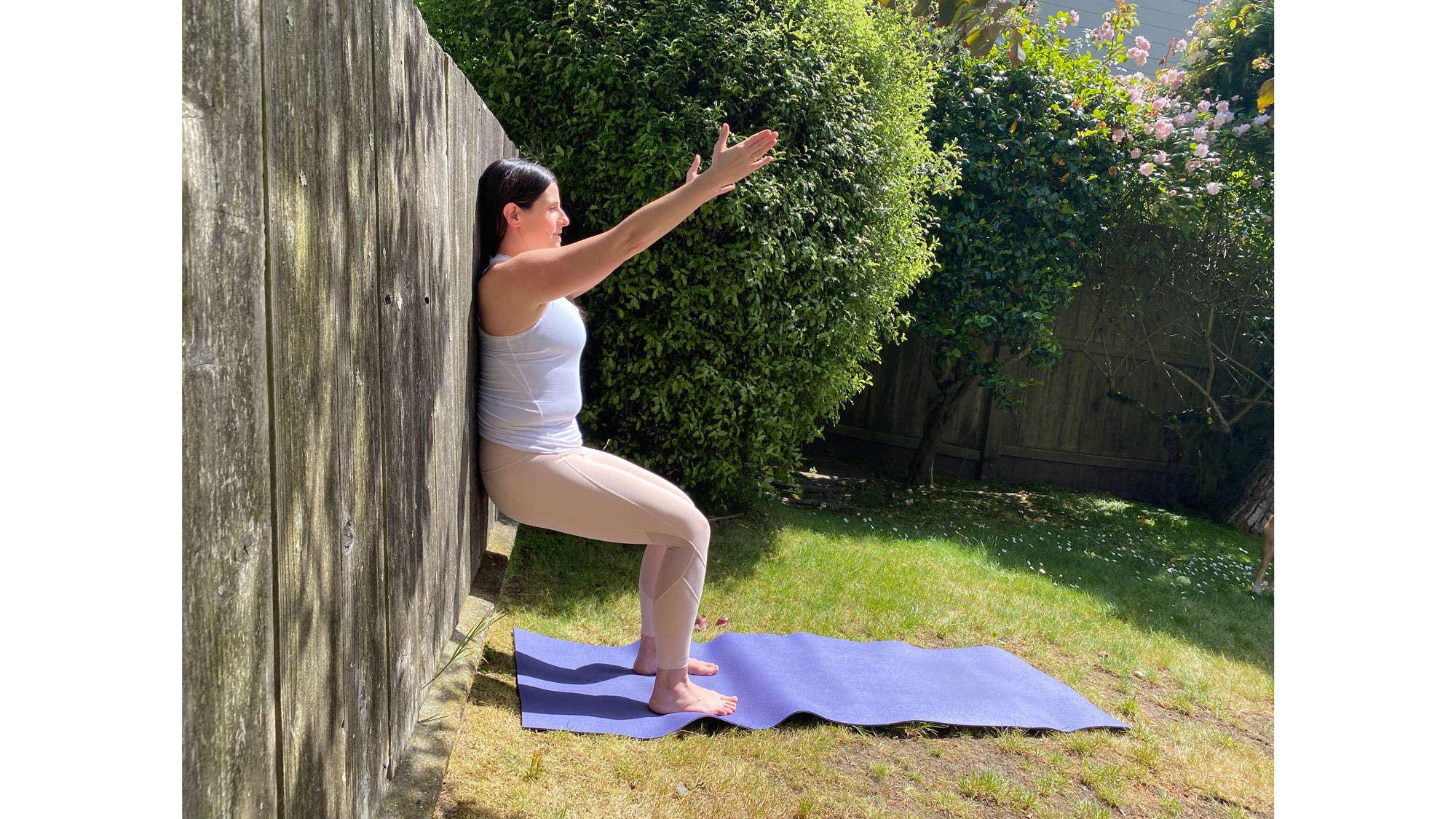
Stand with your back against a wall and step your feet forward so that your heels are under your knees. Bend your knees to 90 degrees and slide your bum down the wall. You can keep your hands in prayer at your chest or reach your arms toward the sky. Gaze straight ahead. Stay for 10 breaths. Place your hands on the wall for balance and straighten your legs to stand back up. Take a brief rest, like a layover, before repeating one more time.
Benefits: Chair Pose gives us the opportunity to practice being uncomfortable, knowing it is a necessary aspect along the path to getting stronger. Think of it as our cramped airplane seat as we depart for our trip. The most challenging journeys often lead to the most beautiful destinations, such as a spectacular vista after a long hike or self-discovery after a difficult period.
Sphinx Pose
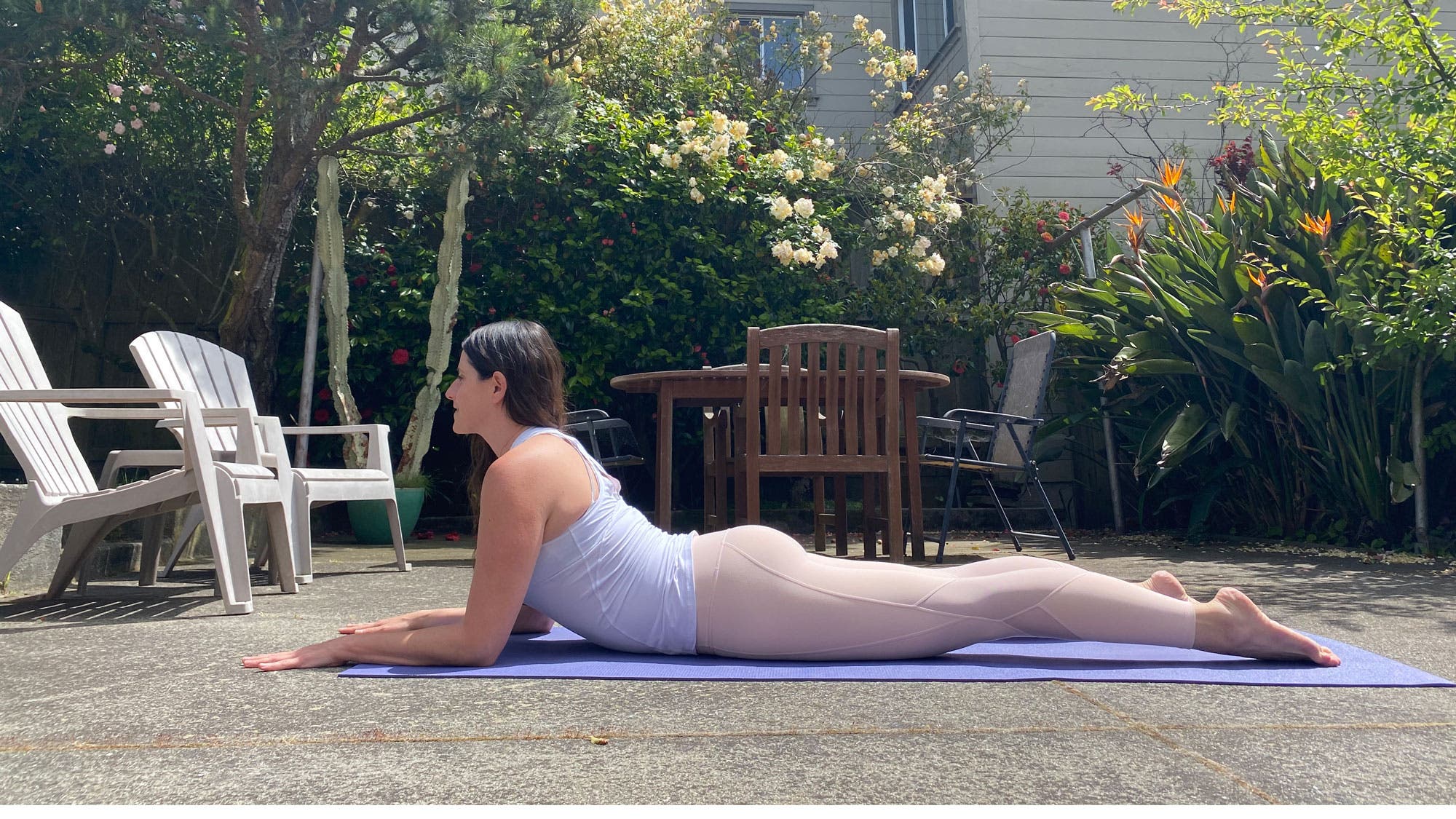
Lie on the floor on your belly. Lift up onto your forearms, palms down, and align your elbows under your shoulders. Separate your legs and feet hip-width apart. Lengthen your lower back by gently pressing your pubic bone into the floor and drawing your lower belly inward. Root your forearms into the floor and lift your chest up to the sky. Find a focal point straight ahead. Hold for 10 breaths. Lower to the floor, turn onto one cheek, and rest your arms by your sides.
Benefits: Sphinx is a great pose after a long journey, because most of the front body is on the ground, helping us “land” at our destination. Visiting ancient ruins teaches us both what no longer works in the present and what has stood the test of time. The Great Sphinx of Giza, Egypt, is nearly 5,000 years old. It has the face of a human, the body of a lion, and the wings of a bird, showing us our staying power when we can be humble, fierce, and light all at once.
Seal Pose
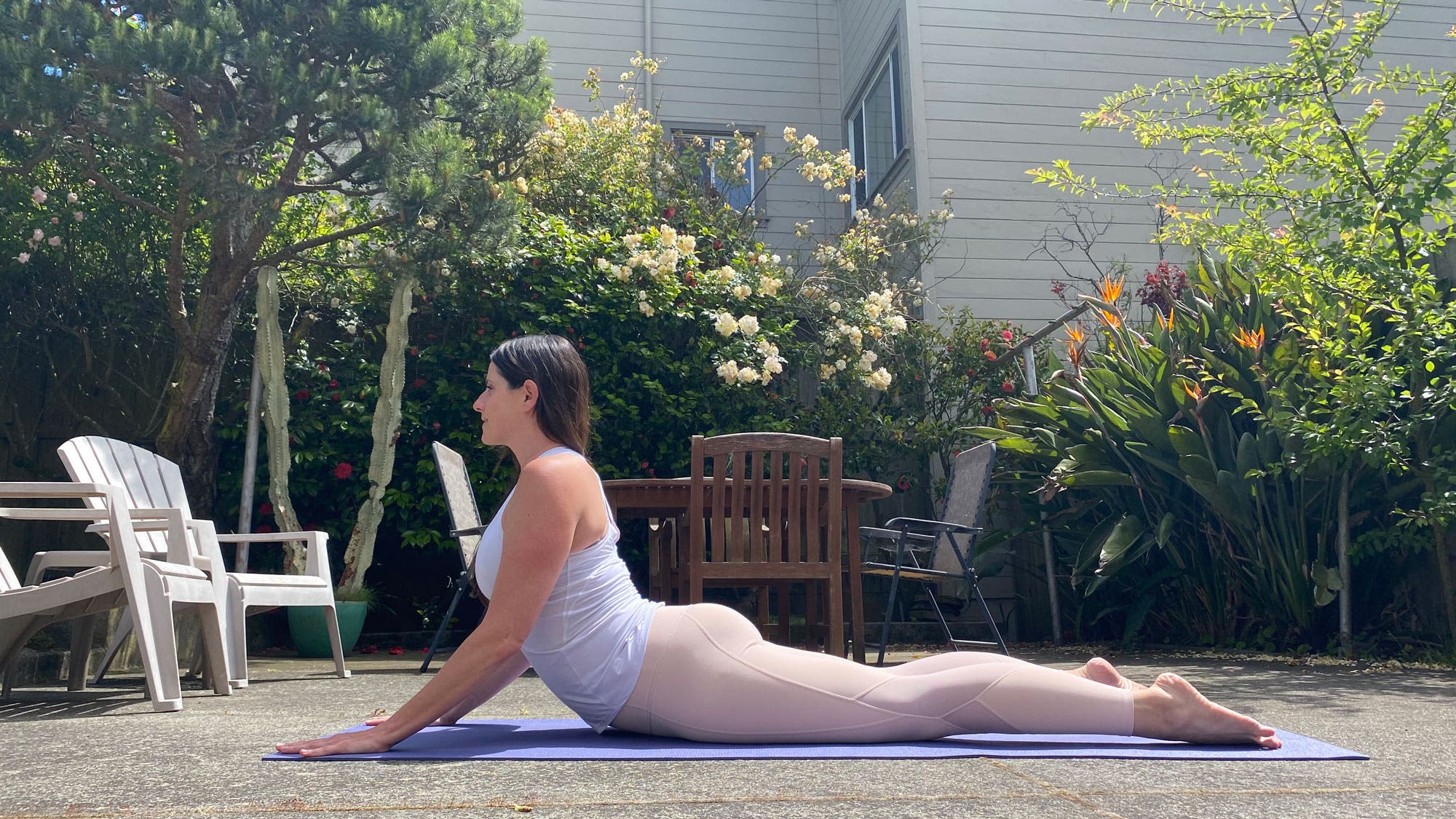
Remain on your belly. Place your hands directly underneath your shoulder heads. Begin to straighten your arms, keeping a slight bend in your elbows. Lift your entire belly off of the floor while keeping your thighs on the ground. Lift your gaze up to the sun or look straight ahead. Actively reach back through your legs and feet. Remain for 8 breaths. On an exhalation, lengthen your body to lower back down and rest on one cheek with your arms by your sides.
Benefits: We must rest in order to truly restore. Even when we are away there are temptations to over-schedule ourselves with excursions and to-dos. No wonder people come home needing another vacation! Let us be inspired by nature and the animals we meet along the way. Seals lounge in the sunshine without agenda. Bring this chill energy into today’s practice by simply enjoying the moment instead of needing to get somewhere.
See also Seal Pose is a Yin Yoga Version of Cobra
Salabhasana (Locust Pose) variation
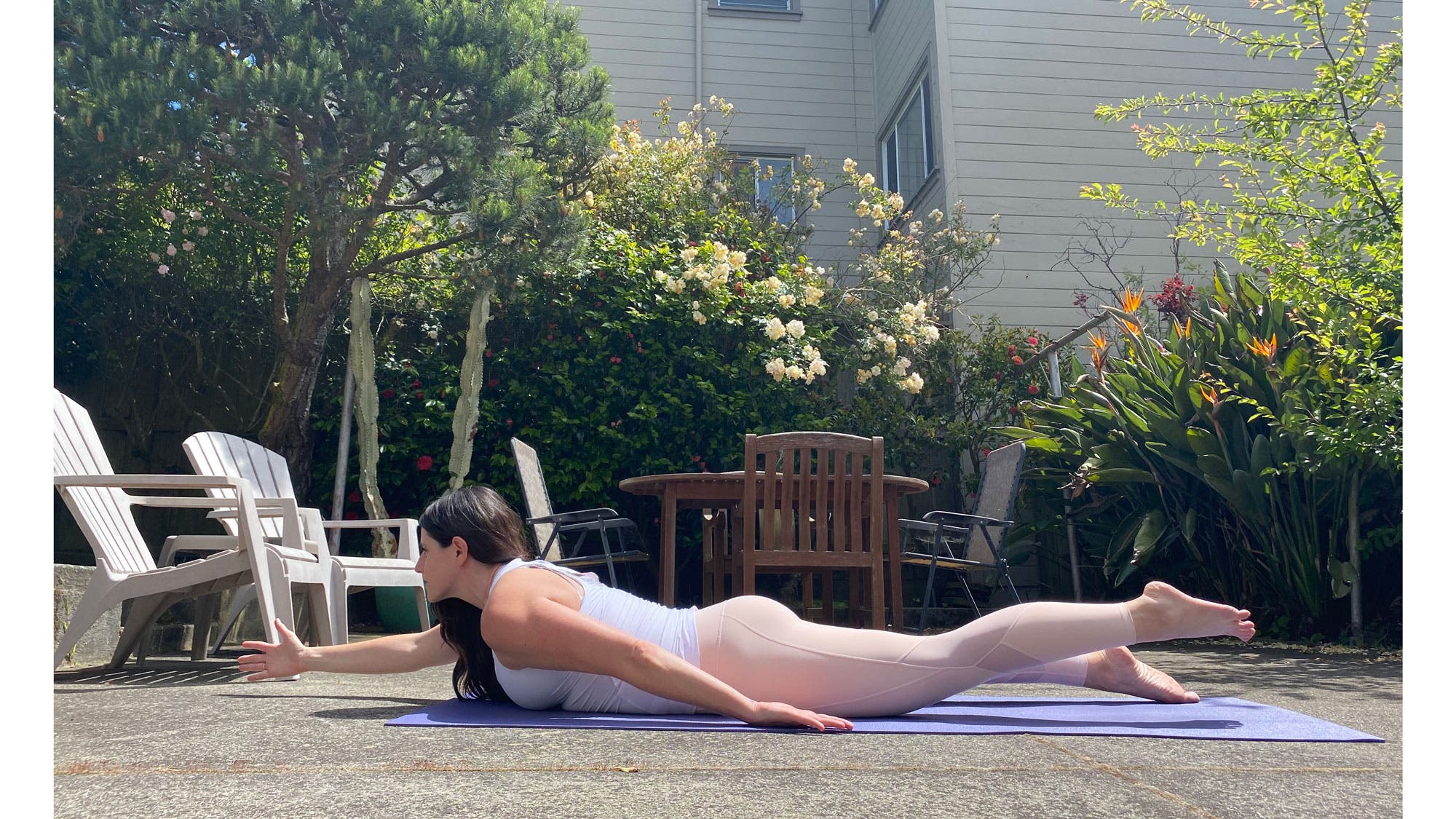
Remain on your belly and inhale, look forward and “swim” your right arm in line with your right ear, with your palm facing your midline. Simultaneously lift your upper body and your left leg. As you exhale, return your arm by your side and lower your whole body to the ground. On the next inhalation, “swim” your left arm forward, while simultaneously lifting your upper body and right leg. On an exhalation, lower back down. That is one full round. Repeat 4 more times for a total of 5 rounds. Imagine yourself moving through water, so each movement is slow and controlled.
Benefits: This variation of Locust Pose teaches us to go with the flow rather than against it. How often do we resist where life is taking us? How exhausting can that be?
See also Learn to Backbend Better With Locust Pose
Paripurna Navasansa (Full Boat Pose)
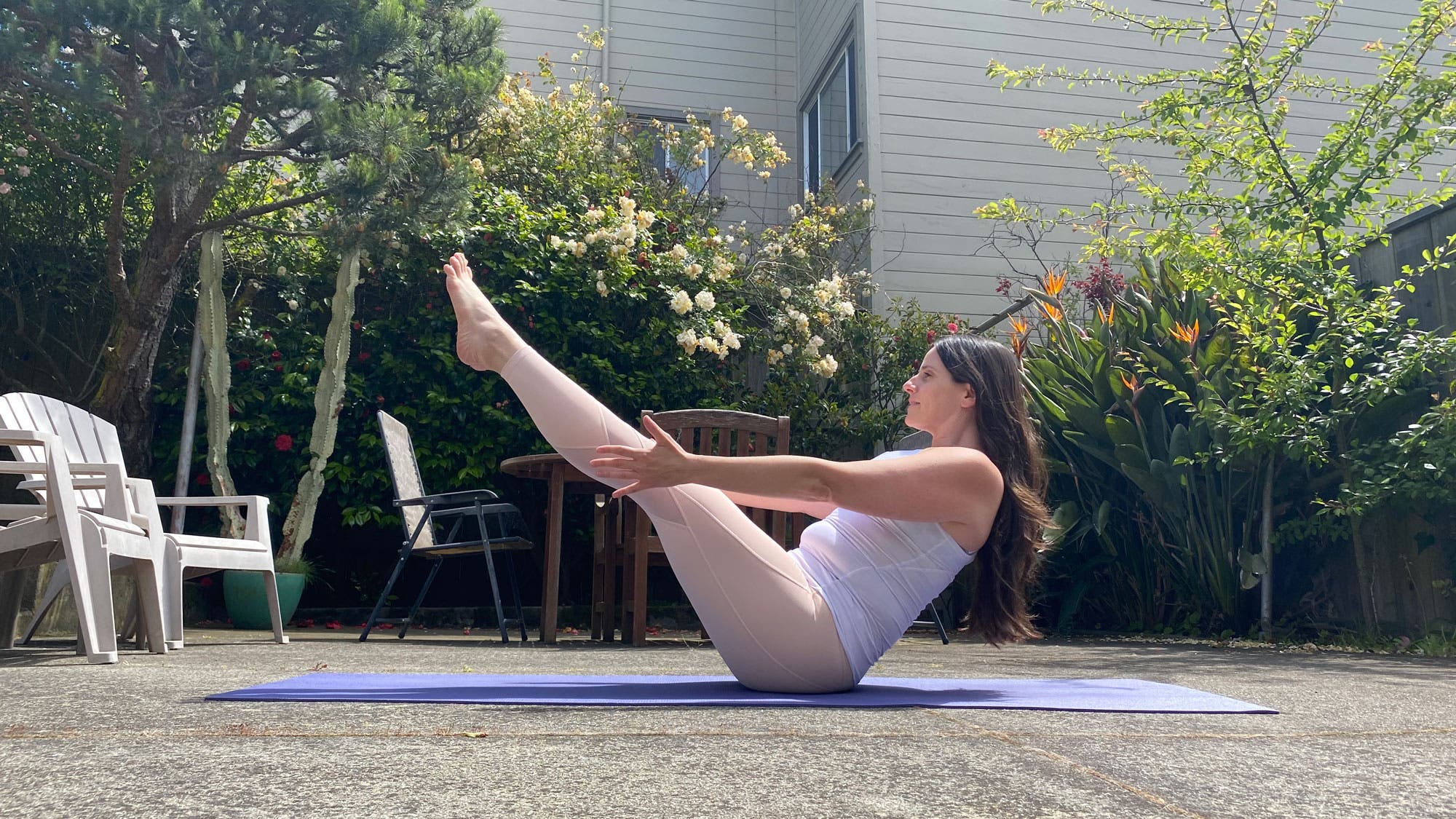
Sit on your mat with your knees bent and your feet on the floor. Hold the backs of your thighs and lean back while keeping your spine long. Find the center of your sitting bones–so you are neither arched nor rounded in the lower back. Lift your shins, until they are parallel to the floor. Reach your arms straight ahead at shoulder height. Stay here with your knees bent or straighten your legs. It is more important to stay centered on your sitting bones and maintain a long spine than to get your legs straight. Gaze at your toes. Hold for 8 breaths. Lower your feet to the floor and repeat Boat Pose once more.
Benefits: Finding equanimity amidst unsteadiness is an important skill to have both at sea and in everyday life. Think of the sitting bones as your boat. Rock too far forward or back and you will tip. Fix your eyes on the horizon to help find stability. The waves of life can be turbulent. If you are a passenger on a boat and at all ungrounded, you will get tossed about.
See also Strong to Your Core: Full Boat Pose
Dolphin Pose
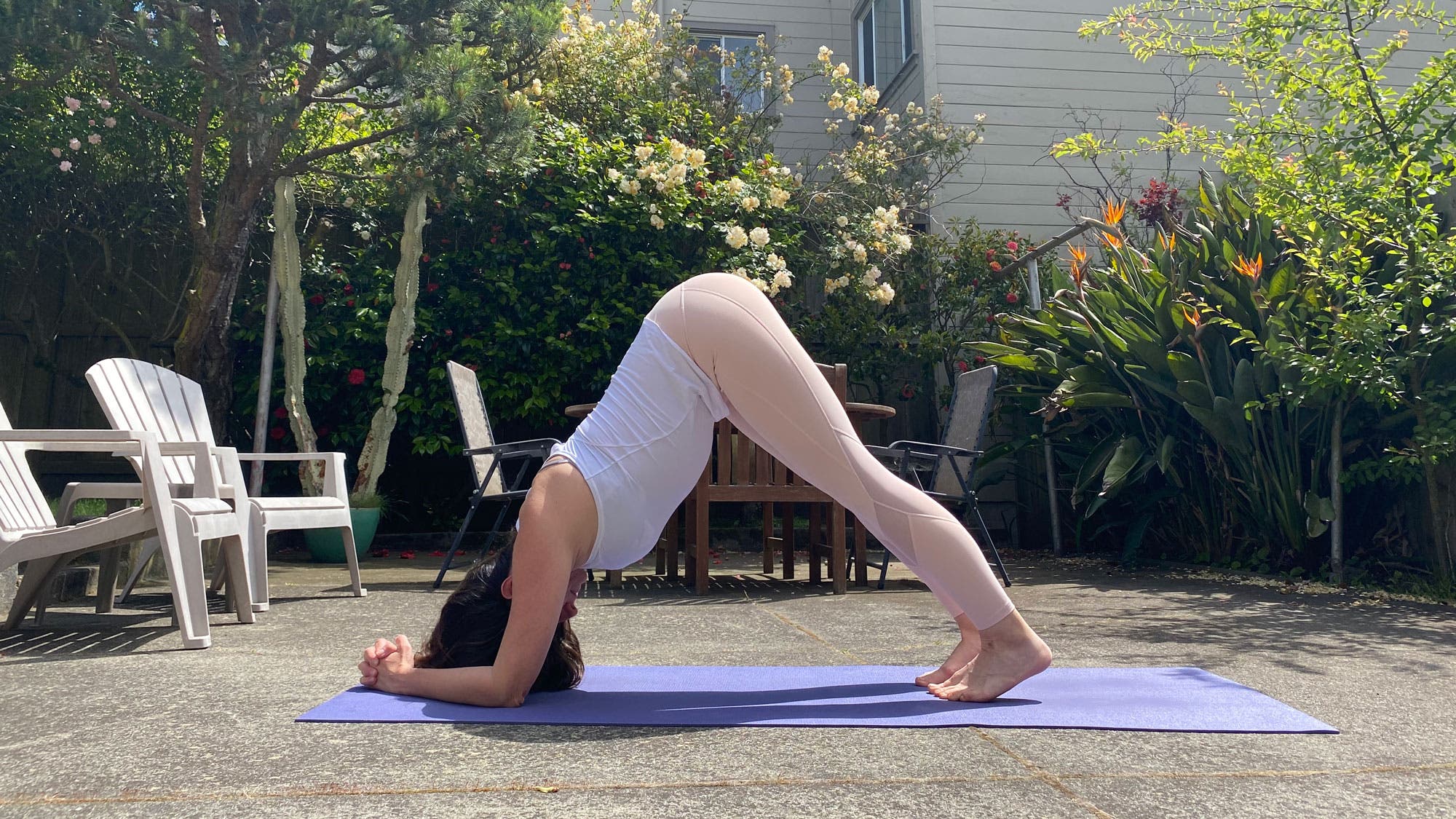
To get into Dolphin Pose, come to hands and knees in Tabletop. Lower your elbows to the floor, placing them under your shoulders. Interlace your fingers. Curl your toes, lift your shins, and press your thighs back. Release your head, looking back between your feet. As the intensity builds, try bringing in a playful energy by practicing a smile. Or even a laugh! Hold for 8 breaths. Lower back onto your knees and rest in Child’s Pose. Or if that was fun, try it one more time!
Benefits: Dolphins love to play. Play is something we are usually good at on vacation, but it is actually a hugely important part of a balanced life. When we treat something as play it becomes about learning rather than accomplishment. Notice in your practice and your life where you are getting too serious. How does your experience change when you bring a quality of lightness instead?
To deepen your core strength and connection in Dolphin Pose, you can place a yoga block between your inner thighs.
Matsyasana (Fish Pose)
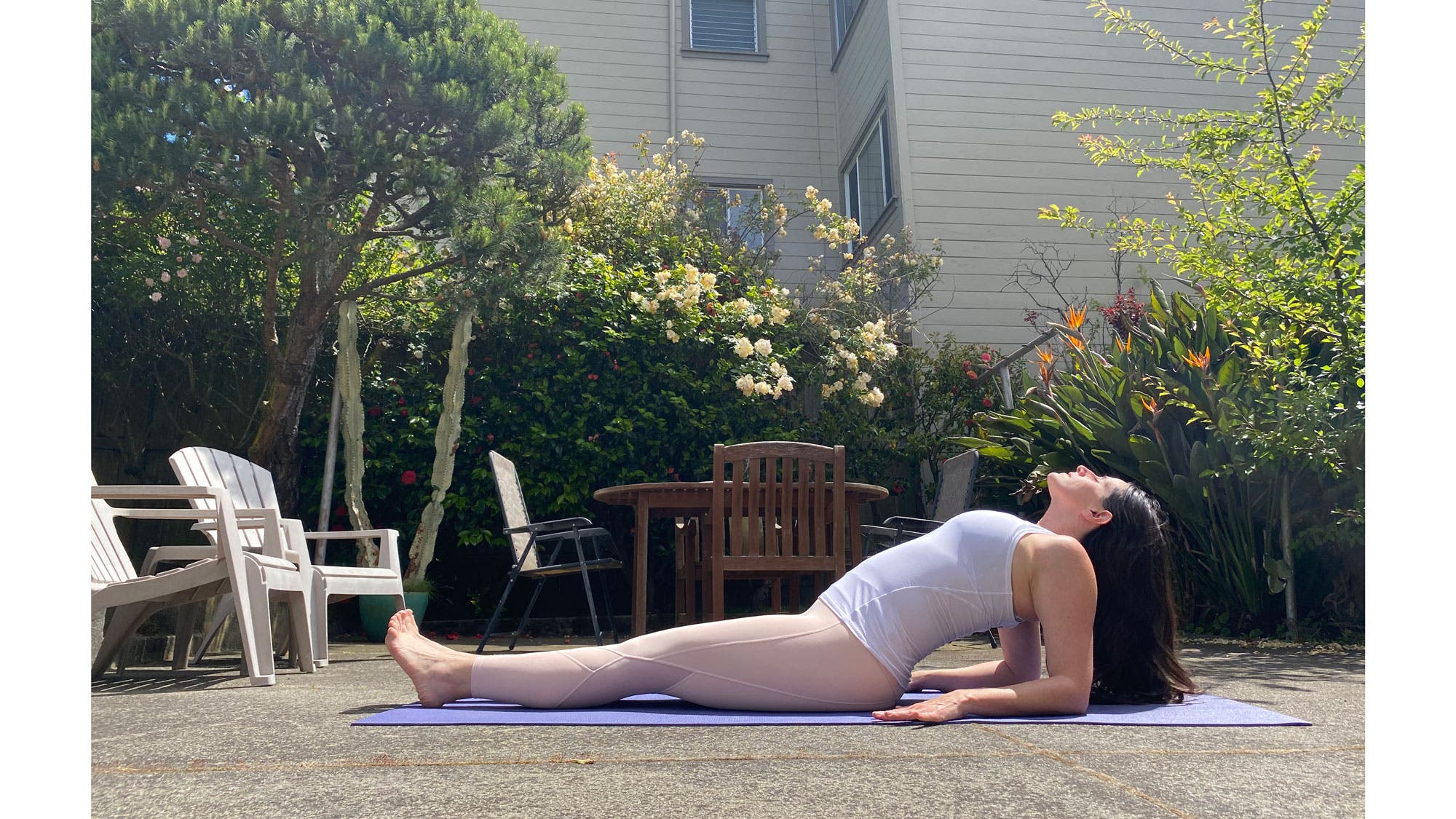
Lie onto your back and prop yourself up onto your elbows, as if you were gazing to the shoreline, with your palms flat to the earth. Separate your legs and feet hips width and spread your toes. Swell your chest toward the sky. Either look up and keep your neck long or begin to take your head back. Close your eyes and stay for 10 deep breaths. To come out, keep your chest lifted and slowly lift your head. Lower onto your back and rest for a moment.
Benefits: Sometimes I think of Fish Pose as “Venice Beach Pose,” a name Annie Carpenter coined for this variation. You are nearing the end of your trip. It is time to savor the effects of your journey thus far. Picture yourself on your favorite beach with the sun shining in your face. Notice how the ebb and flow of your inhalations and exhalations are like waves rising up and down the shore. Is your mind trying to propel you out of the present, knowing your trip is almost over? Can you simply enjoy this moment?
Viparita Karani (Legs-up-the-Wall Pose)
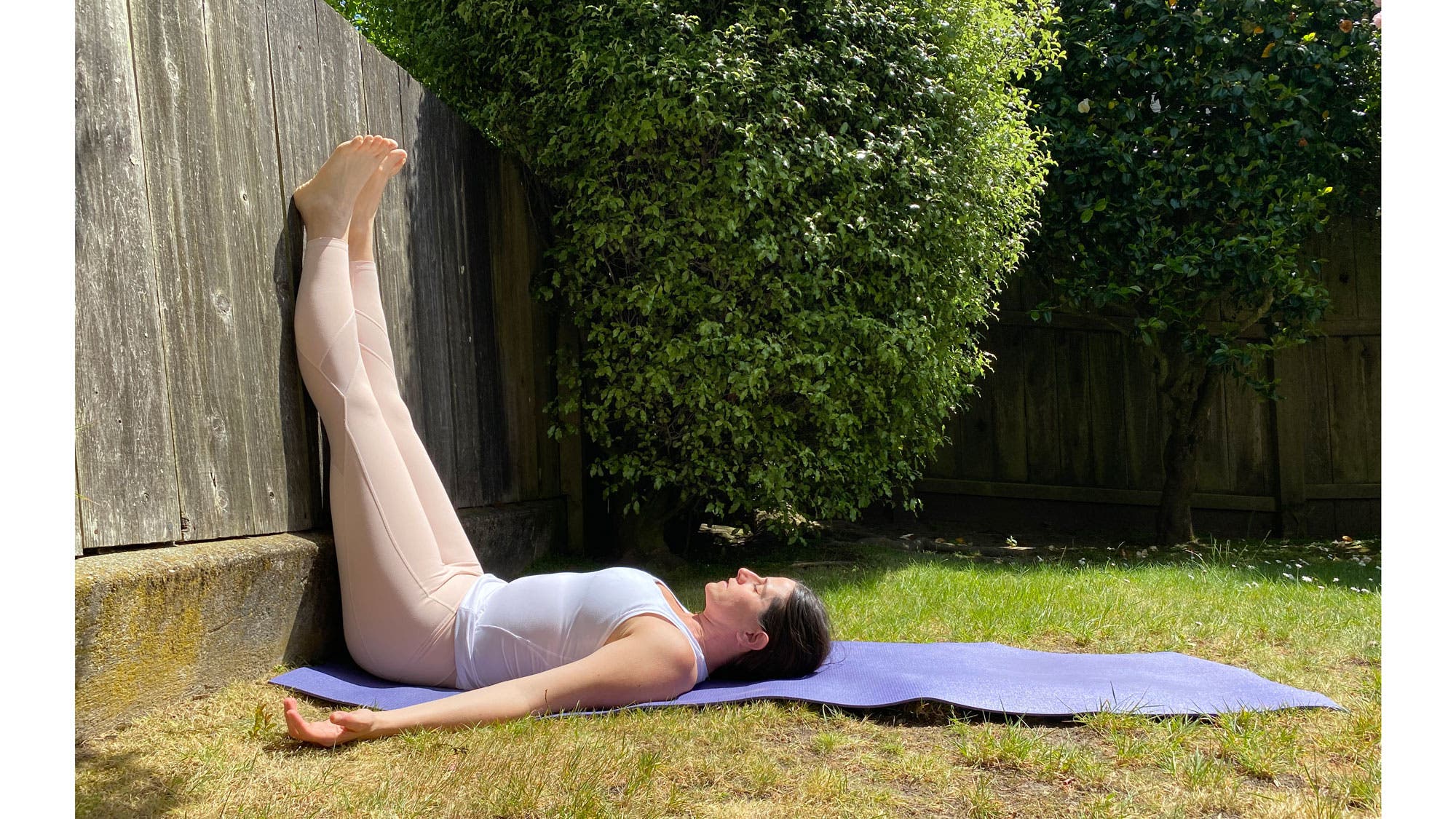
Set your mat up at a wall (or a fence if you are outside). Sit close to the wall and swing your legs up it. Release your back body onto the ground. To ground your sacrum, either move closer to the wall or, if your hamstrings are tighter, slide further back. Relax your arms by your sides. Close your eyes. Rest here for 7 to 10 minutes. When you are ready to come down, bend your knees and slide your feet down the wall. Roll to your right side and rest for a few breaths. Press yourself up and sit quietly for a moment.
Benefits: Our last pose, Legs-up-the-Wall Pose, is our most inwardly focused shape. Viparita Karani is often described as a waterfall because it is believed that cool energy flows from the legs and down to the belly, where it pools like a lake. Having carved your way through the jungle of your mind, imagine finding a clearing with a powerful waterfall and crystal lake. A calm mind is often compared to a still lake. When you look into it, you can see straight through to the bottom (yourself), but it also clearly reflects the outer world around it. Relax here a moment before concluding your adventure.
See also Leg-up-the-Wall Pose Variations
We independently source all of the products that we feature on yogajournal.com. If you buy from the links on our site, we may receive an affiliate commission, which in turn supports our work.